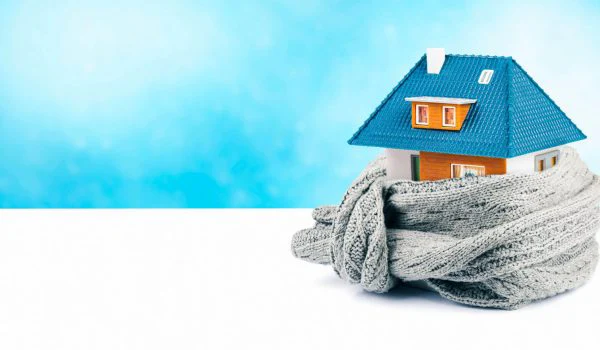Attic insulation in Los Angeles does two jobs at once: it keeps summer heat from flooding the living space and stops winter drafts from sipping away energy. Pricing varies, but homeowners can predict costs within ranges once they understand the home, material, and labor realities in LA. This guide breaks down what Pure Eco Inc sees week after week across Los Angeles neighborhoods, so a homeowner can budget with confidence and avoid surprises.
The short answer: typical price ranges in Los Angeles
Most Los Angeles attics fall between $2,000 and $7,500 for a full insulation project, including material, labor, prep, and basic air sealing. The spread depends on attic size, existing conditions, material type, accessibility, and code upgrades. Small attics or partial top-offs can land near $1,200 to $2,000. Larger attics with removal, rodent remediation, air sealing, and duct sealing can reach $8,000 to $12,000.
For a 1,500-square-foot home with a typical 700 to 900-square-foot attic, Pure Eco Inc often installs new insulation for $3,200 to $6,500, depending on scope and material.
What drives cost in Los Angeles
Los Angeles homes vary widely. A 1920s Spanish in Hancock Park has a different attic story than a mid-century ranch in Woodland Hills or a newer build in Playa Vista. The cost drivers tend to land in five buckets: material, removal and cleanup, prep and sealing, accessibility, and compliance.
Material choices and price impact
Blown-in cellulose: Often the best value for LA climates. It fills gaps well, performs reliably in heat, and uses recycled content. Material and install often run $1.70 to $3.00 per square foot of attic floor for an R-38 to R-49 target, depending on thickness and accessibility.

Fiberglass (blown-in or batts): Blown fiberglass performs well when installed evenly, with pricing similar to cellulose in many cases. Batts cost slightly less in materials, but only if the joist layout is consistent and there are few obstructions. Expect $1.60 to $3.20 per square foot installed for typical R-values.
Spray foam: Delivers air sealing and insulation together. Closed-cell foam costs more upfront, usually $4.00 to $7.50 per square foot depending on thickness and whether it is applied to the roof deck or attic floor. It suits certain roof assemblies but is not always the right choice for vented attics in LA.
Rockwool batts: Good for fire resistance and sound, priced higher than fiberglass batts. Install cost usually sits between fiberglass and spray foam.
A practical note from field work: in older LA attics with irregular spacing, lots of wiring, and many penetrations, blown-in cellulose or fiberglass tends to produce better coverage and value than batts.
Removal and cleanup
If the attic has old, contaminated, or compressed insulation, removal is standard. Removal in Los Angeles typically runs $1.00 to $2.00 per square foot, depending on depth, access, and bag-out requirements. Rodent contamination pushes costs higher because it adds sanitizing and deodorizing steps. A small, clean removal may be a half-day line item. A heavy removal with droppings and damaged ducts can add $1,500 to $3,500 to the project.
Air sealing and prep
In this climate, air sealing is not optional if the goal is comfort and lower bills. Crews usually seal around light fixtures, plumbing stacks, top plates, wire penetrations, and attic hatches with foam and caulk. Expect $500 to $1,200 for typical air sealing on a mid-size attic. If a bathroom fan vents into the attic, rerouting to the exterior adds time and parts. That fix commonly adds $250 to $650 per fan.
Access and layout
Tight hatches, low roof pitches, and truss webs slow production. A walkable attic with decent clearance costs less than a 1920s low-slope with knob-and-tube relics. Homes with vaulted sections or partial attics need a custom approach that affects pricing. Add 10% to 30% for difficult access compared to a straightforward layout.
Code targets and local context
Los Angeles typically targets R-38 to R-49 in attics for energy code compliance. Raising from an existing R-11 or R-19 to R-38 requires more material and time than topping off from R-30. During inspections or energy upgrades, the city may check basic ventilation, attic access, and insulation depth markers. A professional crew will factor this into the quote to avoid return trips.
Real numbers from everyday jobs
A 1948 home in Burbank with 800 square feet r38 insulation Los Angeles of attic space: removal of rodent-soiled batts, sanitize, air seal, blown-in cellulose to R-49, and weatherstrip the hatch. The final invoice typically lands between $4,400 and $6,000.
A 1970s house in Granada Hills with decent existing R-19: no removal, thorough air sealing, cellulose top-off to R-44. Pricing often falls between $2,200 and $3,200.
A 1926 Spanish in Echo Park with low attic clearance and poor ventilation: removal, sanitize, new baffles, air sealing, blown-in fiberglass to R-38. Expect $5,500 to $7,500 due to access and prep time.
These are common cases; a site visit will refine numbers.
What about the energy savings?
In Los Angeles, many homes spend heavily on summer cooling. Upgrading to R-38 or R-49 can cut cooling costs by 10% to 25% depending on house leakage, duct condition, and thermostat habits. Homeowners often see the biggest comfort gain in bedrooms under the attic during August and September. For a typical utility bill, insulation improvements pay back over 3 to 6 years, faster if combined with duct sealing and air sealing.
Choosing the right R-value for Los Angeles
Most projects aim for R-38 to R-49. Going from R-0 to R-38 delivers a big jump in comfort. Going from R-38 to R-60 adds cost with less noticeable benefit in this climate. For most Los Angeles homes, R-38 or R-49 balances upfront cost and yearly savings. Homes in hotter Valley neighborhoods like Van Nuys, Woodland Hills, and Northridge often benefit from the higher end of the range.
Attic insulation Los Angeles: neighborhood realities
Coastal homes in Venice, Mar Vista, and Santa Monica often deal with moisture and salt air. Proper ventilation and sealed bath fans matter as much as R-value. Valley homes in Sherman Oaks and Encino see higher attic temperatures, so radiant heat control and consistent coverage are key. Hillside homes in Silver Lake and Mount Washington may have complex framing and access, which affects labor time and quote structure. Downtown loft conversions sometimes lack a conventional attic, pushing solutions to roof decks or interior assemblies.
When removal is non-negotiable
If insulation is wet, compacted, or contaminated, it should come out. Wet cellulose or fiberglass loses performance and can spur odor or mold risk. Rodent droppings pose health concerns and smell. If ducts are buried and leaking, crews need to uncover and seal them. Pure Eco Inc often finds bath fans dumping into the attic; this must be rerouted. Skipping these steps undercuts the performance attic insulation Los Angeles of new insulation and leads to callbacks.
Extras that can add cost but deliver value
- Attic hatch upgrades: insulated cover and weatherstripping often reduce a noticeable draft at the hallway. Typical add: $150 to $350. Baffles at the eaves: maintain ventilation and keep insulation from clogging soffits. On older homes, adding baffles can add $200 to $600. Duct sealing and minor repairs: a leaky duct system wastes cooling. Sealing can add $400 to $1,200 depending on access and leakage. Radiant barrier for certain roof assemblies: in hotter microclimates, this can lower attic temps. Pricing varies, often $0.80 to $1.50 per square foot if added during an insulation job. Rodent exclusion: sealing entry points after cleanup reduces future problems. Scope-dependent, often $300 to $1,200.
DIY vs. professional installation in LA
DIY top-offs with rental blowers may look cheaper, but the savings shrink if air sealing is skipped or coverage is uneven. Many Los Angeles homes have recessed lights, older wiring, and tight spaces. A professional team moves safely around fragile plaster, protects recessed fixtures, and seals the right areas. In field checks, the biggest misses on DIY installs are thin coverage near edges, lack of baffles, and unsealed penetrations. Those gaps cost money every summer.
Rebates and financing
Utility programs change, but Los Angeles homeowners can often claim rebates for attic insulation and air sealing, especially when meeting R-38 or higher. Incentives sometimes stack with duct sealing or HVAC upgrades. A contractor familiar with local programs will price net of rebates or handle paperwork. Homeowners should ask for current LADWP or SoCalGas offerings at the estimate stage. A modest rebate can shave $200 to $800 off the final bill.
How Pure Eco Inc builds a reliable quote
A reliable quote in Los Angeles starts with a crawl-through and measurements, not a phone guess. The estimator checks insulation depth, attic access, wiring, signs of rodents, bath fan venting, and duct condition. The quote calls out removal, sanitize steps, air sealing, insulation type and R-value, ventilation improvements, and any add-on options. Clear scope prevents change orders.

For example, a homeowner in West Adams receives two options: cellulose to R-49 with full air sealing, or fiberglass blown-in to R-38 with the same prep. Both options list removal, hatch weatherstripping, and baffles at eaves. The homeowner sees price, benefits, and payback in simple terms and chooses based on budget and comfort goals.
What homeowners can do before the crew arrives
- Clear the area under the attic hatch and cover valuables in nearby rooms. Mark any known ceiling issues to avoid stepping on weak spots. Share any past rodent activity or roof leaks so the crew can plan materials. Confirm parking and power access for equipment. Plan for a few hours of noise; insulation machines are loud.
The small details that make a big difference
Proper depth markers every few hundred square feet help verify coverage. Consistent coverage at the perimeter avoids hot rooms. Sealed can lights rated IC are safe to bury; older fixtures may need covers or clearances. Weatherstripping the hatch stops a surprising amount of conditioned air loss. These details do not add much time, but they improve results year-round.
Ready to price your attic?
For attic insulation Los Angeles homeowners can rely on, Pure Eco Inc provides clear, line-by-line estimates and clean installs. A quick site visit in areas like Pasadena, Culver City, Studio City, or Glendale is often enough to produce an accurate number. Most projects finish in a day, sometimes two with removal and duct work. Call or request an inspection to lock in your cost range and see which material best fits the home and budget.
The fastest path to lower summer bills and steadier room temperatures starts above the ceiling. A straightforward attic upgrade, done right, pays back in comfort every single afternoon.
Pure Eco Inc. provides professional attic insulation and energy-saving solutions in Los Angeles, CA. For over 20 years, our family-owned company has helped homeowners improve comfort, reduce utility bills, and make their homes more energy efficient. We specialize in insulation upgrades, spray foam installation, and attic cleanup for homes across Los Angeles County. At Pure Eco Inc., we believe in treating our customers like family and creating a greener, healthier living environment for every household we serve. Call today to schedule an attic insulation inspection or get a free estimate.
Pure Eco Inc.
422 S Western Ave #103
Los Angeles,
CA
90020,
USA
Phone: (213) 256-0365
Website: https://www.pureecoinc.com
Social Media: Facebook | X | Instagram | Yelp
Map: View on Google Maps